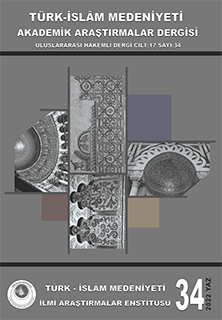Activities on Public Education of National Schools in Teaching New Letters to the Public in The Republic Period
DOI:
https://doi.org/10.5281/zenodo.7596101Keywords:
Alphabet Revolution , National Schools, public education, new lettersAbstract
After the successful conclusion of the war of independence under the leadership of Mustafa Kemal, studies on social, cultural and economic problems in the country were started. Being aware of the fact that the first thing to be done in this direction is to increase the education level of the people, the administrative staff changed the alphabet by making the letter revolution as the first thing. With the alphabet change, it was aimed to make the people literate. In addition, the difficulties in reading the Arabic alphabet and the reasons such as learning difficulties made it necessary to change the alphabet. The administrative staff in the Republican period were aware that these reforms had to be understood first in order to reduce the reforms to be made to the entire people. In this direction, it is aimed to increase the reading and writing rate of people and to reduce ignorance. Understanding the logic of the innovations to be made has undoubtedly been seen in direct proportion to the fact that people are enlightened. Latin letters were adopted on 1 November 1928. Teaching the new letters to the public, especially to citizens aged 16-45 outside the school age, has been of great importance. In order to disseminate the new letters among the public, trainings were given through courses in different institutions. After the acceptance of the new letters, a great education campaign was started. Mustafa Kemal insisted on the establishment of institutions that would directly reach all of the people, as well as state schools. For this purpose, the National Schools opened in 1929 started teaching new letters. In this study, information will be given about the operation of the courses opened during the teaching of the Latin letters to the citizens who are out of formal education and the activities they carried out in the period until their closure.
References
Atay, F.R. (1984). Çankaya, İstanbul: Pozitif Yayıncılık.
Avcı, C. (2013). Harf İnkılabı ve Millet Mektepleri, Akdeniz İnsani Bilimler Dergisi, Akdeniz Üniversitesi, C. III, S. 1, s.43-60.
Başgöz, İ. (1999). Türkiye’nin Eğitim Çıkmazı ve Atatürk, Ankara: Kültür Bakanlığı Yayınları.
Bayraktutan, F. (2020). Millet Mekteplerinin Halk Eğitimi Açısından İncelenmesi, Yakın Dönem Türkiye Araştırmaları, S. 37, s.119-150.
Berkes, N. (2005). Türkiye’de Çağdaşlaşma, 7. Baskı, İstanbul: Yapı Kredi Yayınları.
Bulaç, S. (1981). Osmanlı Devrinde Alfabe Tartışmaları, Harf Devriminin 50. Yılı Sempozyumu, Ankara.
------ (1929) Hâkimiyet-i Milliye, “Dün Memleketin Her Köşesinde Binlerce Millet Mektebi Açıldı”, 2 Kânunusani 1929.
------ (1929) Hâkimiyet-i Milliye, “Millet Mekteplerinde 456.000 Talebe Var”, 1 Şubat 1929.
İlgürel, M. (1981). Millet Mektepleri, Doğumunun 100. Yılında Atatürk’e Armağan, İstanbul Üniversitesi Edebiyat Fakültesi, İstanbul, s.25-35.
İnan, A. (1973). Ellinci Yılda Tarihten Geleceğe, Ankara: Türkiye İş Bankası Yayını.
Kara, A. (2019) Harf İnkılabının Yaygınlaştırılmasında Halkodalarının Rolü ve Önemi, Gaziantep Üniversitesi Sosyal Bilimler Enstitüsü Tarih Anabilim Dalı, Doktora Tezi, Gaziantep.
Kara, A. (2020). Türkiye’de Alfabe Değişiminden Sonra Yeni Harflerin Yaygınlaştırılması ve Halk Eğitiminde Millet Mekteplerinin Rolü ve Önemi, Oğuz-Türkmen Araştırmaları Dergisi (OTAD), C. IV, S. 1, s. 114-141.
Kılıç, F. (2011). Yeni Türk Alfabesinin Kabulü ve Öğretiminde Kullanılan Yöntemler-Araçlar, Yayımlanmamış Doktora Tezi, Ankara Üniversitesi Türk İnkılap Ta-rihi Enstitüsü, Ankara.
--------- (1929). Millet Mektepleri Talimatnamesi, Ankara.
Özadaşık, M. (1999) Cumhuriyet Dönemi Yeni Bir Nesil Yetiştirme Çabaları (1923-1950), Konya.
Özerdim, S. N., (1979). Yazı Devrimi (Yazı Devrimini Kavrayamayanlar), Ankara: Türk Dil Kurumu Yayınları.
Öztürk, C., Nurdoğan, A. M. (2001). Millet Mekteplerinde Yurttaşlık Eğitimi: Öğretim Programı ve Ders Kitapları, Türk Kültürü İncelemeleri Dergisi, S. 5, İs-tanbul, s.197-227.
Parlatır, İ. (2006). Yeni Türk Harflerinin Kabulü ve Uygulamada Türk Basının Rolü, Ankara Üniversitesi’nin 60.Kuruluş Yılı Armağanı, Atatürk ve Türk Dili ve Edebiyatı Türk Eğitimi ve Türk Kültürü Konusunda Seçme Yazılar, Ed: Doğan Atılgan, Ankara, 130-135.
Sevim, A., Öztoprak, İ., Tural, M. A. (2006). Atatürk'ün Söylev ve Demeçleri. Anka-ra:Atatürk Araştırma Merkezi.
------, Resmi Gazete, S.1048, 24.11.1928 .
------, Resmi Gazete, S.1048, 24.11.1928 .
Sakaoğlu, N. (1992). Cumhuriyet Dönemi Eğitim Tarihi, İstanbul: İletişim Yayınları.
Şimşir, B.N. (1992). Türk Yazı Devrimi, Ankara: Türk Tarih Kurumu Yayınları.
------, (1931). İstatistik Yıllığı 1930-1931, T.C. Başvekâlet İstatistik Umum Müdürlüğü, Hüsnü Tabiat Matbaası, İstanbul.
Tansel, F. A. (1953). Arap Harflerinin Islah ve Değiştirilmesi Hakkında İlk Teşebbüsler ve Neticeleri, Belleten, C. XVII, S. 66, s.224-249.
Uluskan, S.B. (2010). Atatürk’ün Sosyal ve Kültürel Politikaları, Ankara: Atatürk Araştırma Merkezi Yayınları.
Ülkütaşır, M.Ş. (2009). Atatürk ve Harf Devrimi, Ankara: Türk Dil Kurumu Yayın-ları.
Yalçın, D., Akbıyık, Y., Süslü, A. (2012). Türkiye Cumhuriyeti Tarihi II, 9. Baskı, Ankara: Atatürk Araştırma Merkezi Yayınları.
Downloads
Published
How to Cite
Issue
Section
License
Copyright (c) 2023 Türk İslâm Medeniyeti Akademik Araştırmalar Dergisi

This work is licensed under a Creative Commons Attribution-NonCommercial 4.0 International License.







